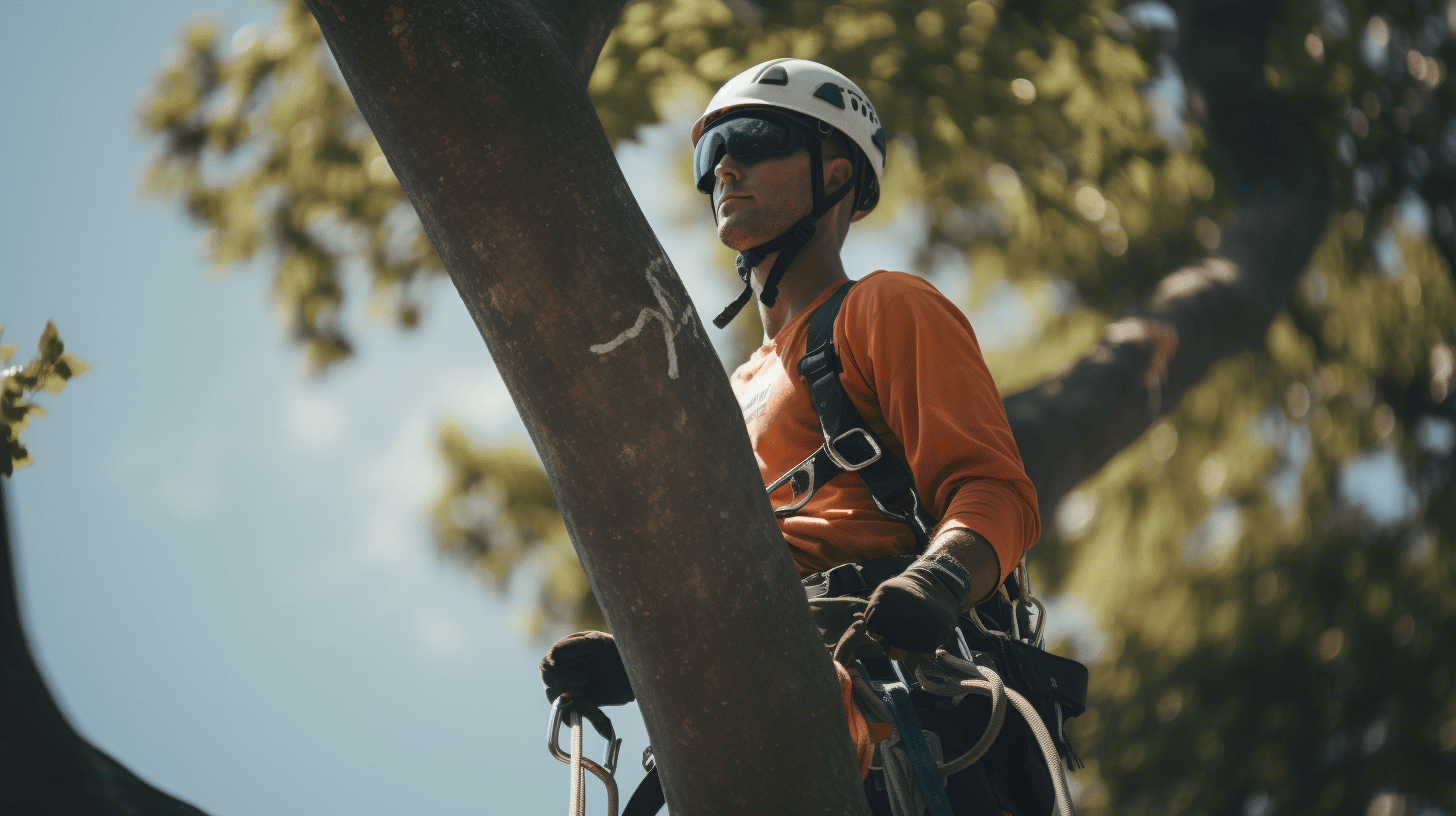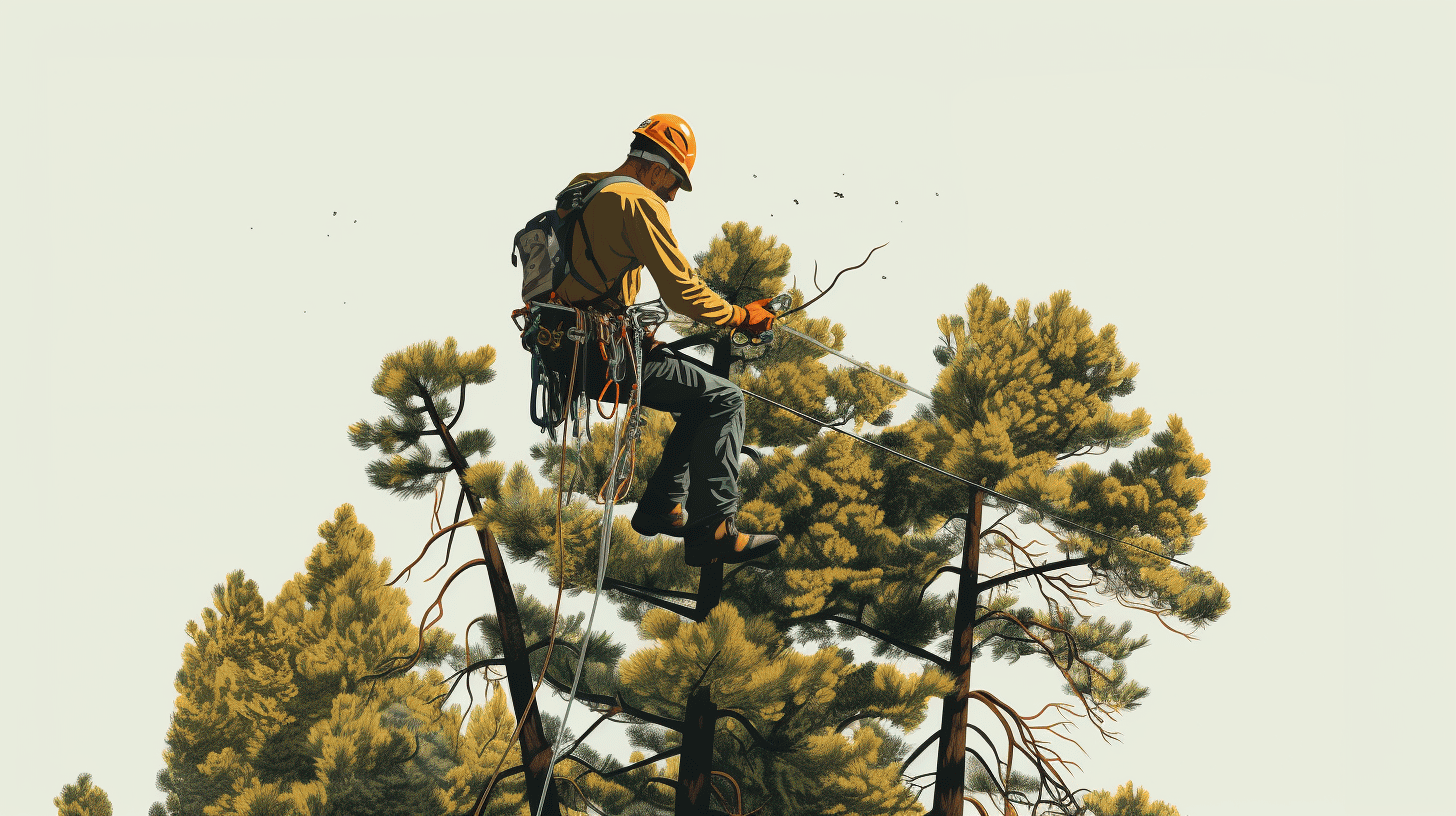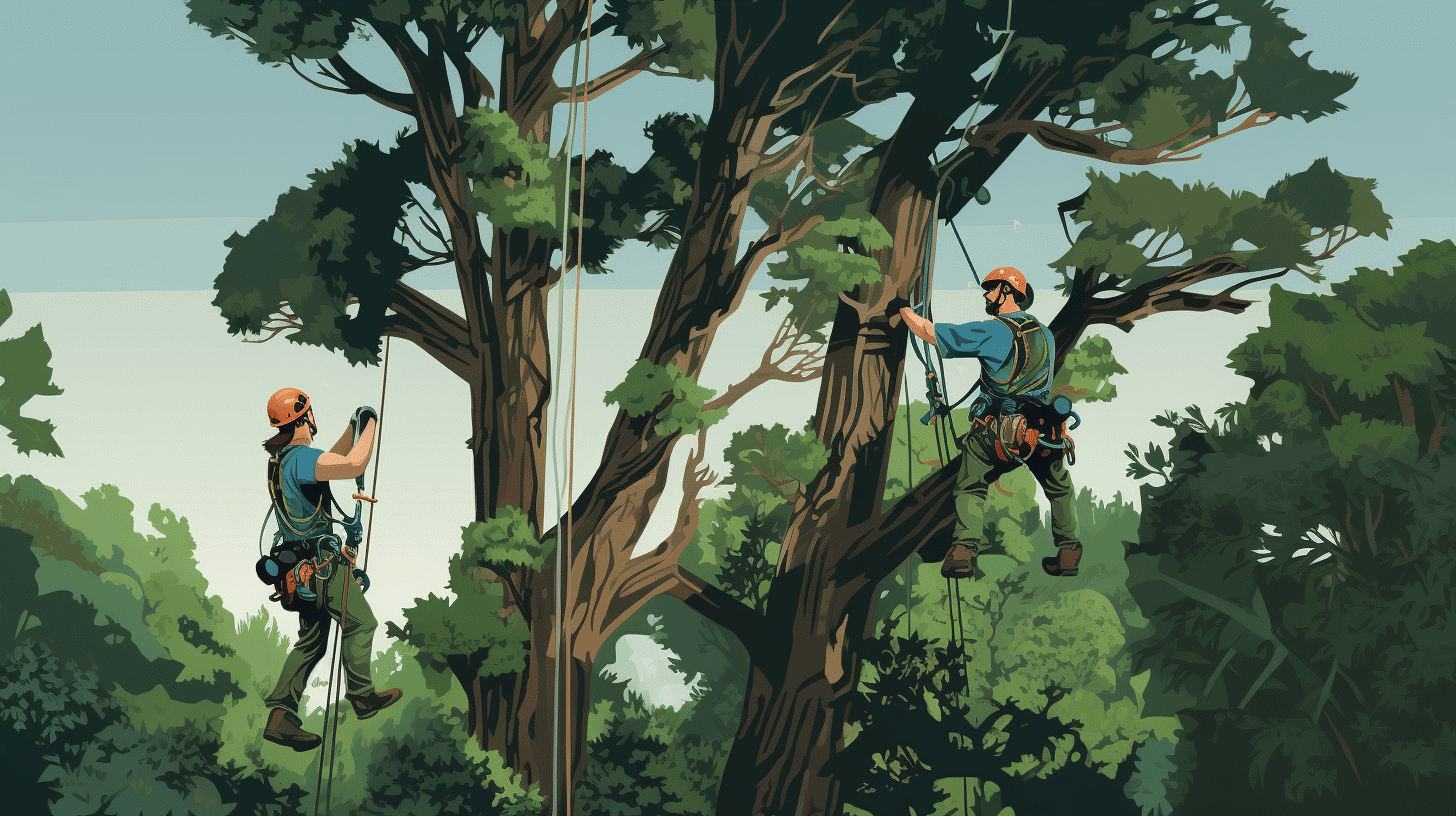Welcome to the realm of arboriculture, a serene and exhilarating place often found at the intersection of earth and sky, brimming with the rustling sounds of leaves, and punctuated with a thrilling harmony of collaborative effort and nature's beauty. However, beneath this idyllic ambiance lies a labyrinth of risk, challenge, and tough work. Those who embark on this adventure, known as arborists, walk a tightrope that balances the aesthetics of their leafy charges with the essential quirk of their profession: safety.
This fascinating blend of nature's attraction and the unforgiving reality of hands-on work can't be navigated without suitable equipment. In this article, we will delve into the importance of quality arborist gear, what features make each item essential, the industry standards they must meet, and how to select gear tailored to your tasks at hand. We'll also explore the stories of some thoroughly tried and trusted suppliers in the field.
Whether you are a beginner starting your arborist journey or an experienced climber seeking insights about the latest gear, you're in the right place. So, gear up and prepare yourself as we ascend into this realm of arborist gear, strength and safety!
Importance of Quality and Durable Arborist Gear
An arborist's job can be adventurous, thrilling, yet extremely dangerous. Imagine yourself perched high amongst the canopies, strategically pruning tree branches to improve the tree's health and aesthetic, or to ensure safety. Now, imagine doing it without quality and durable gear—you can’t, right? That’s why investing in the best Arborist gear is crucial in this profession. From helmets to boots, ropes to harnesses, the entire equipment set can vary from one role to another and can easily exceed a valuation of $1000. This underlines the importance of each tool and its potential impact on the work quality and the practitioner's safety.
Safety Importance
To scale those towering giants or to cut through those robust branches, arborists put their lives on the line every day. Consequently, proper safety measures and gear become their best companions. Bulletproof helmets, rigging gloves, climb-ready boots, and padded harnesses are just a few pieces of this puzzle that collaborate to keep an arborist safe while they take care of our leafy friends.
Regular inspections of arborist gear, coupled with timely replacements of worn-out parts, can significantly reduce the risk of accidents and injuries. Be it a slight fraying in the rope or a dent in the helmet, the equipment needs to be in top-notch state to ensure safety.
Durability and Longevity
Investing in superior quality gear not only ensures safety but also promises durability and longevity. A good piece of arborist gear can last for many years, ensuring safe and hassle-free climbing experiences. However, durability doesn't come at the expense of comfort. Professional gear producers design their products to be as comfortable as possible while maintaining robust strength and durability profiles.
Sure, durable gear might cause a bit of a dent in your pocket initially, but the longevity and quality justifies the cost in the long run.
Comparing Top Options
When it comes to choosing your gear, it's not a one-size-fits-all scenario. Varying roles require different tools, so it's crucial to understand your needs and compare options before making a purchase.
Here's what you need to focus on:
- The Nature of your tasks.
- The safety measures required.
- The gear's anticipated lifespan.
- The Comfort and adjustability.
Remember, just as a painter isn't complete without his sketchpad, an arborist isn't ready for action without their quality gear. Ultimately, an investment in good arborist gear is an investment in safety, productivity, and longevity—it's an investment well worth making.
Types of Arborist Gear and Their Features
Working in the arboreal world, it's essential to understand the various tools of your trade. The right gear can make the difference between a successful climb and a potentially hazardous situation. So, let's take a closer look at the different types of arborist gear and their indispensable features.
Arborist Bags
An arborist bag is an integral piece of equipment for any tree surgeon. They are typically spacious, capable of storing and organizing a variety of tools such as carabiners, pulleys, and other small necessities. Another crucial feature of an arborist bag is the durable materials they're constructed from, often high-denier, waterproof fabrics that can stand up to the rough and tumble of outdoor work.
Ropes
Another key component in an arborist's kit is the rope. Used for ascending, descending, and maneuvering through treetops, ropes come in various diameters and strengths. Look for ones that are designed to be lightweight, have a high tensile strength, and resistant to abrasion for longevity.
Harnesses
Harnesses provide the support an arborist needs when working at heights. These should be adjustable and ergonomically designed to distribute weight evenly across the body, reducing strain and discomfort.
Climbing Packs
Compact and lightweight, climbing packs offer additional space for carrying gear up into the trees. These specialized backpacks can be attached to a harness, allowing the arborist to have easy access to their equipment while working in high places.
Eye Protection
Protecting your eyes while working is crucial, and Z87-rated safety glasses are highly recommended. This type of safety eyewear is designed to shield your vision from dust, debris, and possible impacts that could cause injury.
Arborist Clothing
Wearing the right clothing isn't just about comfort; it's also about safety. Arborist clothing is designed with durable materials to withstand the outdoor elements and potential hazards encountered during a day's work. These garments also have reinforced areas prone to wear and tear, further extending their lifespan.
In the world of arboriculture, being equipped with the right gear is the key to ensuring safety and efficiency. So, no matter if you're a seasoned tree professional or a beginner in the field, understanding the types of arborist gear and their specific features will give you the confidence to handle any arboreal tasks safely and efficiently.
Safety Guidelines and Industry Standards
As arborists, it's necessary to understand the various guidelines and standards outlined by established industry authorities. Fostering a keen knowledge of safety guidelines and consistently applying these measures helps to ensure a safe working environment. In this article, we will dive into one such set of guidelines - the American National Standards Institute's Z133 safety standard (ANSI Z133), discuss routine inspection procedures, the efficacy of safety meetings, and the significance of choosing gear that meets common industry standards.
ANSI Z133 Guidelines
ANSI Z133 is an influential set of safety standards for the arboriculture industry. Its guidelines are designed to keep arborists safe as they navigate the demanding and potentially hazardous nature of their work. Interestingly, ANSI Z133 does not offer strict requirements for climbing equipment but instead highlights the importance of each arborist knowing how to use, inspect, and maintain their gear effectively.
Inspection Procedures
Regular inspection procedures are an indispensible part of maintaining an arborist's safety equipment. Inspection should be comprehensive, meticulous, and routine, focusing not only on gear such as helmets, ropes, and harnesses, but also on power tools. Ensuring these items are functional and fit for their intended use significantly reduces the risk of accidents.
Safety Meetings
Daily or weekly safety meetings are an effective way to continually emphasize the importance of safety measures. These sessions can function as refresher courses, providing opportunities for workers to discuss safety-related challenges they've faced and how these were addressed.
Choosing Gear That Meets Industry Standards
Even though ANSI Z133 does not lay down stringent requirements for climbing equipment, it's paramount to choose gear that meets industry standards. Quality gear, which adheres to recognized standards, provides an extra layer of assurance and safety while working.
In arboriculture, as in any industry with potential hazards, safety cannot be overstated. Ensuring adherence to recognized safety guidelines, like the ANSI Z133 standard, routine equipment inspections, conducting regular safety meetings, and using industry-standard gear are all integral aspects of building a strong safety culture in the workplace. These measures not only protect workers but also contribute to the overall success and reputation of the business.
Professional Arborist Gear Suppliers
As an arborist, having the right equipment is as crucial as the skills you have at your disposal. The right gear ensures your safety and allows you to do your work efficiently. In order to get top-notch arborist gear, you should consider the following suppliers renowned for their quality and reliability:
TreeStuff
TreeStuff is popular among arborists for its extensive selection of quality equipment. The online store stocks everything from harnesses to hand saws, climbing ropes to carabiners. TreeStuff’s solid reputation in the industry comes from their commitment to arborist safety and efficiency. Whether you’re a seasoned tree-care professional or just starting out, TreeStuff’s offerings are sure to meet your needs.
WesSpur
WesSpur is another top-rated supplier. Their product range is immense, covering everything a professional arborist might need. Besides gear, the company also sells educational materials for arborists aiming to improve and expand their knowledge. WesSpur’s emphasis on safety and continuous learning makes it a preferred choice for arborists around the world.
Sherrilltree
Sherrilltree is rightly known as the ‘arborist’s lifeline’, and with good reason. Their selection of professional-quality tools and safety equipment is second to none. They offer equipment from leading manufacturers, ensuring arborists get the best available gear. Sherrilltree demonstrates a true understanding of an arborist’s role, ensuring each product offers protection and ease of use.
Arbession
Arbession is the professional arborist’s sanctuary when it comes to gear. Offering a combination of innovative tools and reliable classics, the company aims to empower tree care professionals with the right equipment. Goods sold by Arbession are not only reliable but also feature ergonomic designs for optimum comfort and efficiency in your arboriculture activities.
GAP Arborist Supply
GAP Arborist Supply completes our top suppliers’ list due to its commitment to delivering high-quality and affordable gear. The company sells everything from climbing gear to protective clothing, making it a one-stop-shop for all your arborist needs. Their affordable pricing doesn't compromise the quality, attesting to the company's dedication to helping arborists succeed.
So whether you’re new to the arboriculture industry or an experienced hand in the field, these equipment suppliers can provide you with the gear to ascend safely, work effectively, and descend confidently each time you take on a job. Remember, the right equipment is not a luxury; it's essential for your safety, effectiveness, and overall experience. Trust these suppliers to help you reach new heights in your professional arborist career.
Selecting the Right Gear for Specific Tasks
In the quest of successfully completing any task at hand, having the appropriate gear is paramount. Whether you're a professional or an amateur, using the right equipment can not only optimize your performance but also ensure your safety. Here, we delve into the significance of different types of gear you'll need in various scenarios, as well as key considerations when choosing them.
Ropes
They say a strong rope can swing you to great places, and in the sphere of tasks that require some level of elevation, this holds true. The strength, length and flexibility of your rope all bear weight on your task's outcome. For instance, climbers might prefer lightweight ropes that don't compromise on strength, while those towing or pulling heavy objects need ropes that can withstand high levels of tension. Before purchasing a rope, it's critical to ask the right questions about its tensile strength, length, and flexibility based on the task.
Harnesses
Safety harnesses are integral when it comes to tasks involving elevations. They provide support and distribute pressure across the user's body, reducing the risk of falls and injuries. Look for harnesses that provide an excellent balance between comfort and safety. Additionally, considering the durability and sturdiness of buckles and straps should top your list when buying a harness.
Spurs
When your task involves tree climbing or pole climbing, spurs become your best ally. However, keep in mind that all spurs aren't made equal. Consider the length and sharpness of the gaffs, as well as the padding and comfort of the spur pads, in order to select the most suitable spurs for your task.
Pulleys
Pulleys are the unsung heroes that simplify lifting heavy weights. If your task involves lifting or suspending heavy objects, don't underestimate the importance of a high-quality pulley system. Make sure to consider its load-bearing capacity, material composition, and design before deciding on the purchase.
Helmets
Last, but certainly not the least, are helmets - a lifeline in tasks where things can literally come crashing down. Your helmet should fit comfortably while providing maximum protection. Look for durable materials, adjustable features, and, if necessary, compatibility with accessories such as visors or headlamps.
Remember that each gear varies significantly among different brands, models, and designs. As pointed out by many professionals, trying out different equipment can fine-tune your preference and eventually lead you to the gear that suits your exact need. The right gear selection is not a luxury but a necessity in delivering efficient, safe, and successful outcomes.
Keeping Up With Industry News and Advances in Arborist Gear Technology
Tending to Mother Nature's towering monoliths is no child's play, and every arborist knows this. Ensuring the highest level of safety and sustainability while doing so requires the perfect blend of expertise, experience, and, of course, the right gear. As technology advances, arborist gear continues to evolve, offering better protection, efficiency, and durability. If you want to stay competitive as an arborist, keeping up with industry news and the latest gear technology is crucial.
Ropes that Outlast Time
The thread of an arborist's safety often hangs onto the rope they use while sky-high. Advances in technology have given birth to ropes like HyperStatic, well known for their durability and incredibly low stretch.
- Durability: HyperStatic ropes are designed to weather through the toughest of conditions and pressures. Its framework ensures a high level of abrasion resistance, making it incredibly resilient.
- Low Stretch: When you're up high in the trees, the last thing you'd want is your rope stretching too much. HyperStatic's low stretch property ensures that you have better control and provides excellent flexibility without compromise.
Much like the Best Rain Gear for Outdoor Construction, these ropes are designed to withstand extreme conditions while offering optimal performance.
Equipments that Redefine Reliability
When you’re high above the ground balancing yourself on a tree limb, reliable equipment is not just a luxury, it is of paramount importance. The gear has to be durable, flexible, and yet lightweight. This is where the Arbortec range shines.
Arbortec equipment:
- Offers an impressive range of arborist gear from footwear to chainsaw trousers.
- Has been designed specifically with professional arborists in mind, centre-staging durability and reliability.
- Incorporates advanced technology and lightweight materials to optimize performance without adding bulk.
In a world fraught with challenges, staying abreast of these innovations not only sets you apart from your competitors, but it also equips you with the best tools of the trade. Keeping up with technology in arborist gear offers the double benefit of improved safety measures and efficiency in your work. Whether you're starting or looking to upgrade, remember to prioritize quality. After all, being an arborist isn't just about maintaining the trees; it's about ensuring your safety as you do so.
Conclusion
In the demanding world of arboriculture, having a sturdy, reliable gear makes all the difference. It goes beyond performance to ensure safety, comfort, and of course, peace-of-mind. But finding quality can prove challenging amidst the sea of options. This is why businesses like Rain Gear Pro exist: to take the guesswork out of shopping for arborist gear.
Rain Gear Pro excels in offering top standard gear that is not only sturdy but also comfortable. One of their best-selling products, the chainsaw safety pants, are manufactured right here in Canada, renowned for their resilience against common issues like crotch blowout.
Furnished with Kevlar inserts for unrivaled protection, these saw pants are crafted to not only endure but also to provide superior comfort allowing you to take on your tasks with confidence and security. Browse through their collection now on their website: www.raingearpro.com.
Ultimately, the key to a safe and efficient work day lies in investing in quality equipment that is built to last. Remember, compromising on your arborist gear means compromising on your safety and productivity. Make a smart gear choice today.
Stay safe, stay productive, and tackle your arborist tasks head-on with confidence!
Frequently Asked Questions
-
What are some essential arborist gear?
Some essential arborist gear includes a helmet, climbing harness, ropes, carabiners, ascenders, descenders, pulleys, chainsaw, pruning saw, and protective clothing.
-
What is the purpose of a climbing harness?
A climbing harness is used by arborists to keep them secure and supported while climbing trees. It distributes the weight and provides attachment points for ropes and other equipment.
-
What should I look for when buying arborist gear?
When buying arborist gear, consider factors such as quality, durability, comfort, safety features, ease of use, and compatibility with other equipment. It's also important to choose gear that meets industry standards and regulations.
-
How often should I replace my arborist gear?
The lifespan of arborist gear depends on various factors, such as usage, exposure to elements, and manufacturer recommendations. It's advisable to regularly inspect your gear for signs of wear and tear and replace any damaged or outdated equipment.
-
Can I use regular work gloves instead of specialized arborist gloves?
Using specialized arborist gloves is highly recommended as they provide better grip, protection against cuts, and are designed specifically for arborist work. Regular work gloves may not offer the same level of safety and functionality.























Leave a comment
This site is protected by hCaptcha and the hCaptcha Privacy Policy and Terms of Service apply.